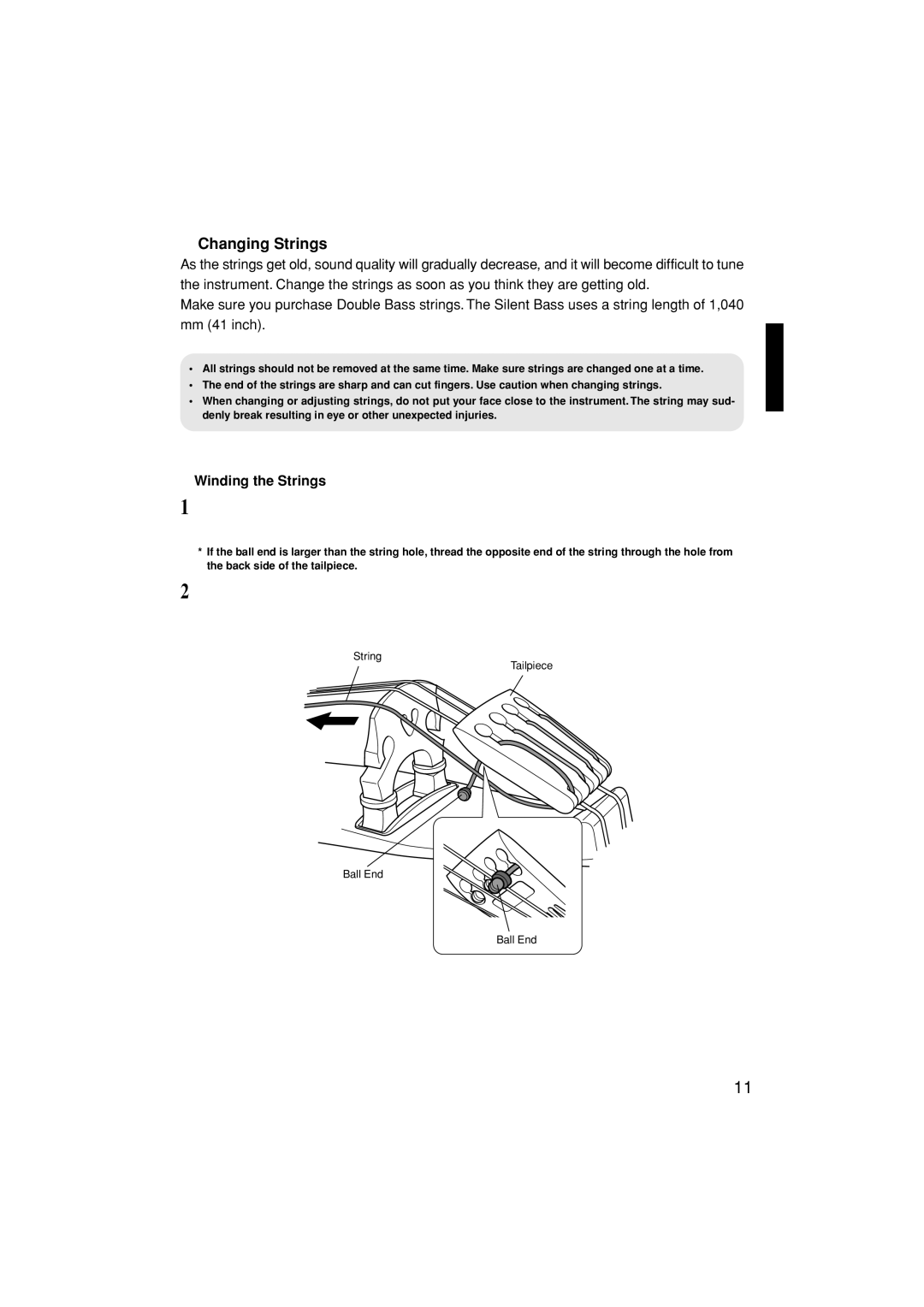SLB200 specifications
The Yamaha SLB200 is a state-of-the-art silent bass that seamlessly blends traditional craftsmanship with modern technology, making it an ideal choice for musicians seeking versatility and reliable performance. Renowned for its rich sound and exceptional playability, the SLB200 caters to a wide range of musical styles, from jazz to classical to contemporary pop.One of the standout features of the SLB200 is its innovative design. The instrument is crafted with a solid maple body, providing a warm and resonant tone that bass players cherish. The unique shape of the body not only enhances its visual appeal but also makes it more comfortable to play, especially in standing situations where balance is crucial.
The bass is equipped with Yamaha’s advanced pickup system, which includes an under-saddle piezo pickup and a secondary microphone. This dual pickup configuration allows for greater tonal flexibility, enabling players to dial in their desired sound profile, whether they prefer a bright, percussive attack or a deep, mellow bass tone. The high-quality preamp further ensures that the signal sounds pristine, whether recording or performing on stage.
Another impressive aspect of the Yamaha SLB200 is its built-in effects and modulation options. Musicians can access an array of pre-programmed sounds and effects, including reverb and chorus, enhancing their playing experience. The instrument can also be connected to external processors or amplifiers for even more sound customization, making it an excellent choice for live performances.
Portability is another key feature of the SLB200. Weighing significantly less than traditional acoustic double basses, it is perfect for musicians who need to transport their gear frequently. The instrument comes with a custom gig bag, ensuring it remains protected during transit.
Durability and ease of maintenance are also hallmarks of the Yamaha SLB200. Unlike traditional wooden basses, the synthetic materials used are resistant to changes in humidity and temperature, making it suitable for use in various environments without compromising sound quality.
In summary, the Yamaha SLB200 is an exceptional instrument that provides a perfect blend of traditional sound and modern technology. With its unique design, advanced pickup system, versatile tonal options, and portability, it stands out as an indispensable tool for bass players looking to enhance their artistry while enjoying the benefits of innovative engineering. Whether in the studio or on stage, the SLB200 delivers a remarkable playing experience that’s sure to inspire musicians.

